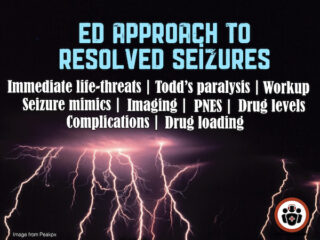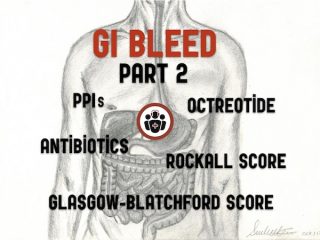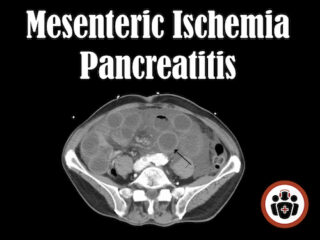Ep 132 Emergency Approach to Resolved Seizures
What is the essential list of immediate life threats with specific antidotes that we must know for the ED patient with a seizure? What are the key elements for distinguishing a true seizure from syncope? From Psychogenic Non-Epileptic Seizure (PNES)? From TIA? From migraine? How do you distinguish Todd's Paralysis from TIA or stroke? What are indications for lactate and troponins in patients who present with a seizure? Do all patients with first time unprovoked seizures require anti-seizure medication in the ED? What is the preferred anti-seizure medication and route for ED loading for the patient with a first time seizure? Which patients who present with seizure require a CT head in the ED? What are indications and ideal timing for EEG for patient who present to the ED with seizure? and many more...




